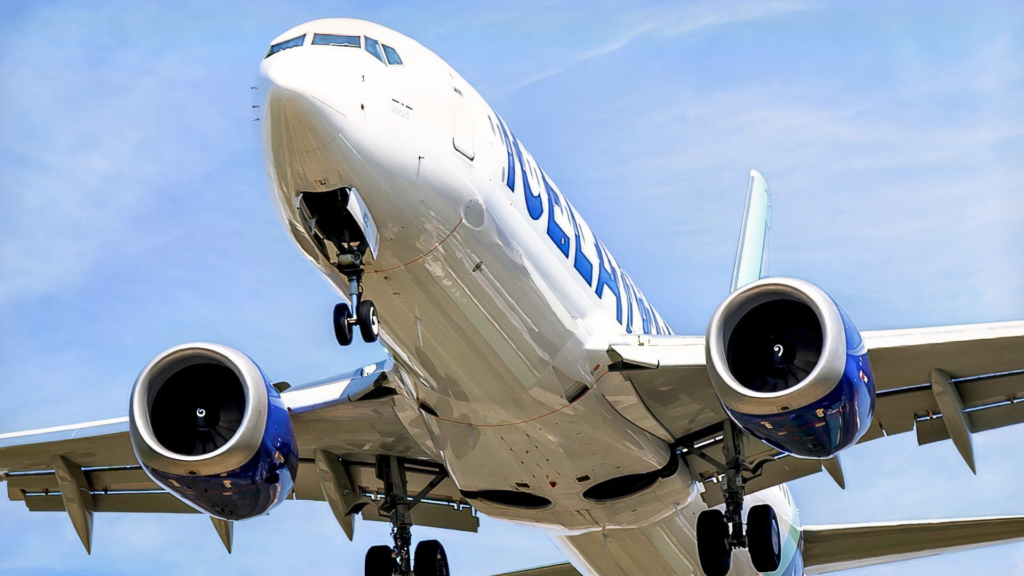So-called time-traveling flights are a straightforward concept. They are when you arrive at your destination airport before you have left from your origin airport. It exists when the block time of a particular route is lower than the timezone change.
Let’s focus on long-haul scheduled passenger services in the upcoming northern winter 2025/2026. Based on IATA slot seasons, this will run from October 26 until March 28. Using OAG data to examine the schedules of 3,000+ airport pairs from Europe, Africa, the Middle East, etc., to the Americas shows that just one time-traveling market exists.
The 1 Long-Haul Transatlantic Time-Traveling Route This Winter
The sole entry is Icelandair from Keflavik to Vancouver. In the cold season, the carrier serves this market four times weekly aboard the 160-seat Boeing 737 MAX 8, which is the carrier’s lowest-capacity jet equipment. Its highest-capacity single-aisle aircraft, the Airbus A321LR, will not be used to the Canadian airport during the winter.
On nearly all occasions, FI697 will depart from Europe at 17:15 and arrive in Canada at 17:05 local time. It’ll arrive ten minutes before it leaves. This is because the block time will be 7h 50m, against 8h 00m for the timezone change. On three occasions—December 20, December 27, and January 3—it’ll arrive 20 minutes before it leaves, with the schedule being 17:50-17:30.
This 1 Market Has Flights Where You Leave & Arrive At The Same Time
Iceland is involved here, too. This is unsurprising: it relates to the country’s geographic position, extensive North American operation, and fewer timezone changes to the Americas than other nations in Europe and other relevant continents/regions.
In the upcoming winter, Icelandair will operate daily from Keflavik to Seattle. The most common winter schedule is shown below. As you’d expect, it means the block time of eight hours is the same as the off-season timezone change. While the A321LR will mainly be deployed—it will be the variant’s top route this winter—the 737 MAX 8 and 757-200 will appear occasionally.
|
Frequency |
Keflavik To Seattle; Local Times* |
|---|---|
|
Daily |
FI681: 17:00-17:00 |
|
* Winter only |
Other long-haul transatlantic markets came close to being included. For example, Icelandair’s Portland winter service leaves Keflavik at 16:50 and arrives at 17:00—very near, but not near enough. Its Minneapolis flights usually leave Iceland at 16:45 and get to the US at 17:25, and so on. Various other examples exist.
The Nearest Entry That Does Not Include Iceland
Moving away from Iceland indicates that various mainland European airports have entries that arrive soon after they leave. This section only includes airport pairs with up to a one-hour difference. Most markets involve KLM. Note that, as the schedules can change, only the most common times are stated.
For example, there is KLM from Amsterdam to Calgary on the 777-200ER, 787-9, or 787-10 (12:40-13:40); Edmonton on the A330-200 (14:10-15:10); Portland on the 787-9 and 787-10 (10:25-11:25); and Vancouver on the A330-200 (13:10-14:10). Its Seattle flights did not meet the maximum one-hour criterion.
No other non-Icelandic long-haul passenger transatlantic market met the one-hour requirement. The next closest was Air France from Paris CDG to Vancouver. While winter frequencies vary from four weekly to daily, all flights are on the A350-900. Most of the time, services leave France at 10:20 and arrive in Canada at 11:25.





